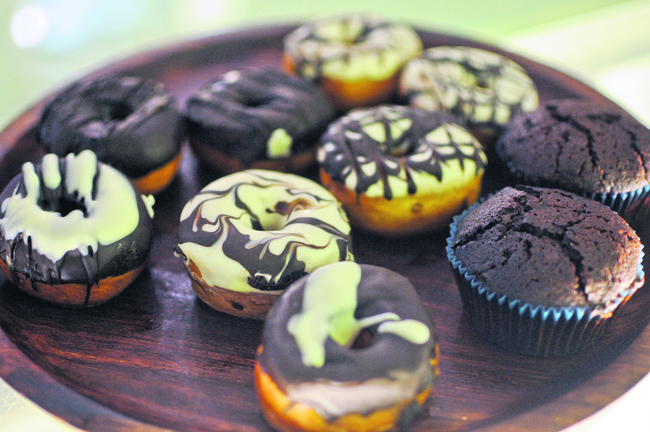Never underestimate the recipe
“I have been baking for more than 17 years now but even today, before I begin my work in the kitchen, I make sure the recipe is front of me,” reveals Basu. He wants everybody to know, baking isn’t like cooking curry where you taste and make changes accordingly. You shouldn’t solely rely on your instincts and gut feelings. A recipe is very important.
Baking can very well be compared with science. When it comes to making cookies, cakes, and pies, you need to be precise in both ingredient measurements and preparation techniques. There is no room for alterations. This can really affect the end result.
So before you begin, novices out there will benefit from reading the entire recipe slowly. Indeed, read the recipe in its entirety. That way, ingredients, tools, and steps aren't accidentally overlooked. Again, baking is about precision, so being familiar with the recipe before beginning will help a lot. Read it two or three times, if you must. Just be clear on the steps.
Learning the perks of baking

Don’t scrimp on the tools
“I hear there are some people who like to bake with microwaves as well. But I wouldn’t recommend it at all,” starts Basu, “Here, the fluffiness of cake, the texture of the cookie, they all matter and the tools that you use can affect those end results.”
So starting from ovens and mixing bowls, Basu, first of all, recommends baking enthusiasts to invest in a hand mixture. This he guarantees will be useful for multiple treats and can elevate the standard of your baking process too. He adds that it’s not that expensive as well.
Then there are the measuring devices. Basu suggests a small weighing machine to get your amount correct. There are also measuring cups for both liquid (milk, water) and dry ingredients (sugar, flour, nuts).

Know the difference between mixing and beating
Mixing is a broad term in baking that generally means to lightly combine two or more ingredients together. Beating is a more intense process than mixing and traditionally requires a whisk or electric mixer. The goal in beating is often more than just combining ingredients together, but also to introduce air into the mixture. “And here is where most of the students struggle. Getting the beating technique wrong is perhaps the most common mistake,” says Basu. So, his suggestion? Practice.
Some cakes and baking toppings, such as meringue, require egg whites to be beaten until they are airy and voluminous. This creates a soft structure to your baked goods without the use of a leavening agent like baking powder, so they are very useful.
Research the strength and weaknesses of your ingredients
We all know there is going to be sugar, chocolate, cream, flour and such involved in your baking quest but there aren’t only one type of sugar, chocolate, cream, flour and such. Each ingredient comes in different varieties and a good baker knows which one is best suited for which recipe. Sometimes it’s experience that is the teacher and sometimes it’s more word of mouth.
As an example, Basu talks about the types of cream available in our local market. There are still some out there who aren’t aware that you can purchase both fresh and rich cream. They both play a role in making pastries but their roles apparently differ according to their characteristics. Basu explains since fresh cream is made of vegetable fat, we can’t beat them too much. There is always the risk of spoiling them so when he has to decorate his pastries with cream, and create structures, he prefers using rich cream. They are more stable when beaten and hold shapes better.
The same goes for chocolate as well. While semi sweet chocolate melts easily, sweet chocolate sets quicker and holds shape better. So latter would make a better option for making garnishes. If you use semi sweet chocolate for things like ganaches or coating cakes, your life will be a lot easier. Thus knowing your ingredients always help.
Note the temperature
If you want to start baking seriously, you might want to buy a thermometer for reference. There are many components of cake baking, and temperature contributes to just about all of them. Basu shares that at their bakery, they have different rooms for making the chocolate, the dough and baking in ovens itself and that’s because noting the temperature is just that important.
For example, do you want a tall, proud, appealing cake? You must note the temperature of the butter. Room temperature butter ranges from 15°C TO 21°C. This is important as butter at this temperature will incorporate more air during the creaming process and provide more height to your cake.
It’s similar with eggs too. It’s best to keep its temperature in mind. If your eggs are too cold, they can cause the butter to firm up in little lumps. These little butter lumps will later create holes in your cake, a scenario you obviously want to avoid.
From the temperature of the flour to the oven, these things matter. They all need to be factored in while deciding on the amount of yeast, liquids, and other ingredients you put in.




































